An Energy-Efficient T-Based Routing Topology for Target Tracking in Battery Operated Mobile Wireless Sensor Networks
Abstract
1. Introduction
- Dividing the network area into strips to minimize the number of deployed sensor nodes and achieve effective tracking of the objects.
- Measuring the moving speed of sensor node based on the sensing range and length of the detector’s stick.
- Introducing T-based Routing Topology (TRT) to ensure the congestion free data collection.
- Analyzing the performance of the proposed data routing protocol with respect to the Packet Delivery Ratio (PDR), Average End-to-End Delay (AEED), Average Energy Consumption (AEC) and control overhead.
2. Related Works
- Numerous routing protocols have been evolved in the past years to collect the data from the targeted area. However, the existing protocols are not suitable for all the applications in real time. For example, in tree topology based data collection, the number of nodes involved in each level is . The number of nodes participating in the sensing area grows as the depth of the tree increases in the existing tree topology-based data gathering. And for cluster topology, the number of node deployment depends on the transmission range of the sensor nodes.
- The majority of research on WSNs focuses on periodic data collection, in which all sensor node nodes send data to the base station at regular intervals.
- Most of the protocols utilise a large number of sensor nodes to collect data or detect an event in a specific area.
- The majority of protocols are designed for a standard application and are intended to collect data from the sensing area and transmit it to the base station in a multihop fashion.
3. Problem Statement
- Poor data communication between the sensing node and base station is being caused by a lack of network coverage.
- The data routing and location identification of landmine in real time is limited.
- Still, it has wrong location marking, low operating speed and effectiveness.
4. Proposed Protocol Design
4.1. Network Assumptions
4.2. Network Model
4.3. Energy Consumption Model
4.4. T-Based Routing Topology
| Algorithm 1: PRM-ACK based route formation. |
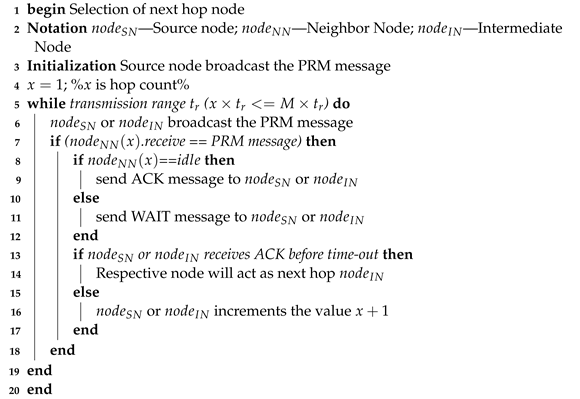 |
4.5. Data Sensing and Compression
4.6. Significance of the Proposed Methodology
- Minimum number of sensor nodes is used to cover a large network region that decreases the complexity and cost of installation.
- It offers an effective technique for implementing a fully automated land mine detection system that reduces human participation and prevents human life risk.
- Horizontal search efficiently monitors the affected region of the land mine allowing easy identification of the secure region, while random node deployment does not ensure the entire sensing area.
- The suggested PRM-ACK based routing avoids collision and congestion. So, it is highly appropriate for the collection of event-driven data.
- The suggested data routing technique offers a precise location of the buried place of explosive material enhancing the safety of land mine disposal.
5. Mathematical Analysis of the Proposed Mechanism
5.1. Energy Consumption
5.2. End-to-End Delay
5.3. Control Overhead
6. Simulation Results and Discussion
7. Conclusions
Author Contributions
Funding
Institutional Review Board Statement
Informed Consent Statement
Data Availability Statement
Acknowledgments
Conflicts of Interest
References
- Walravens, C.; Dehaene, W. Low-power digital signal processor architecture for wireless sensor nodes. IEEE Trans. Very Large Scale Integr. (VLSI) Syst. 2014, 22, 313–321. [Google Scholar] [CrossRef]
- Bhanumathi, V.; Kalaivanan, K. Application Specific Sensor-Cloud: Architectural Model. In Computational Intelligence in Sensor Networks; Mishra, B., Dehuri, S., Panigrahi, B., Nayak, A., Mishra, B., Das, H., Eds.; Studies in Computational Intelligence; Springer: Berlin/Heidelberg, Germany, 2019; Volume 776, pp. 277–306. [Google Scholar]
- Gungor, V.C.; Hancke, G.P. Industrial Wireless Sensor Networks: Challenges, Design Principles, and Technical Approaches. IEEE Trans. Ind. Electron. 2009, 56, 4258–4265. [Google Scholar] [CrossRef]
- Rashid, B.; Rehmani, M.H. Applications of Wireless Sensor Networks for Urban Areas: A Survey. J. Netw. Comput. Appl. 2016, 60, 192–219. [Google Scholar] [CrossRef]
- Bhanumathi, V.; Kalaivanan, K. The Role of Geospatial Technology with IoT for Precision Agriculture. In Cloud Computing for Geospatial Big Data Analytics; Das, H., Barik, R., Dubey, H., Roy, D., Eds.; Studies in Big Data; Springer: Cham, Switzerland, 2019; Volume 49, pp. 225–250. [Google Scholar]
- AL-Mousawi, A.J.; AL-Hassani, H.K. A survey in wireless sensor network for explosives detection. Comput. Electr. Eng. 2018, 72, 682–701. [Google Scholar] [CrossRef]
- Barkunan, S.R.; Bhanumathi, V.; Sethuram, J. Smart sensor for automatic drip irrigation system for paddy cultivation. Comput. Electr. Eng. 2019, 73, 180–193. [Google Scholar] [CrossRef]
- Landmine Monitor 2018. In Landmine and Cluster Munition Monitor; ICBL-CMC: Geneva, Switzerland, 2018.
- Kasban, H.; Zahran, O.; Elaraby, S.M.; El-Kordy, M.; El-Samie, F.E.A. A Comparative Study of Landmine Detection Techniques. Sens. Imaging 2010, 11, 89–112. [Google Scholar] [CrossRef]
- Siegel, R. Land mine detection. IEEE Instrum. Meas. Mag. 2002, 5, 22–28. [Google Scholar] [CrossRef]
- Gooneratne, C.P.; Mukhopahyay, S.C.; Gupta, G.S. A Review of Sensing Technologies for Landmine Detection: Unmanned Vehicle Based Approach. In Proceedings of the 2nd International Conference on Autonomous Robots and Agents, Palmerston North, New Zealand, 13–15 December 2004; pp. 401–407. [Google Scholar]
- Phamila, Y.A.V.; Amutha, R. Low complexity energy efficient very low bit-rate image compression scheme for wireless sensor network. Inf. Process. Lett. 2015, 113, 672–676. [Google Scholar] [CrossRef]
- Nasri, M.; Helali, A.; Sghaier, H.; Maaref, H. Adaptive image compression technique for wireless sensor networks. Comput. Electr. Eng. 2011, 37, 798–810. [Google Scholar] [CrossRef]
- Wu, H.M.; Abouzeid, A.A. Energy efficient distributed image compression in resource-constrained multihop wireless networks. Comput. Commun. 2005, 28, 1658–1668. [Google Scholar] [CrossRef]
- Malvar, H.S. Biorthogonal and nonuniform lapped transforms for transform coding with reduce blocking and ringing artifacts. IEEE Trans. Signal Process. 1998, 46, 1043–1053. [Google Scholar] [CrossRef]
- Amgoth, T.; Jana, P.K. Energy-aware routing algorithm for wireless sensor networks. Comput. Electr. Eng. 2015, 41, 357–367. [Google Scholar] [CrossRef]
- Al-Karaki, J.N.; Kamal, A.E. Routing Techniques in Wireless Sensor Networks: A survey. IEEE Wirel. Commun. 2004, 11, 6–28. [Google Scholar] [CrossRef]
- Heo, J.; Hong, J.; Cho, Y. EARQ: Energy Aware Routing for Real-Time and Reliable Communication in Wireless Industrial Sensor Networks. IEEE Trans. Ind. Inform. 2009, 5, 3–11. [Google Scholar] [CrossRef]
- Gallina, L.; Rossi, S. A process calculus for energy-aware multicast communications of mobile ad hoc networks. Wirel. Commun. Mob. Comput. 2013, 13, 296–312. [Google Scholar] [CrossRef]
- Gallina, L.; Hamadou, S.; Marin, A.; Rossi, S.A. Probabilistic Energy-Aware Model for Mobile Ad-Hoc Networks. In Analytical and Stochastic Modeling Techniques and Applications; Al-Begain, K., Balsamo, S., Fiems, D., Marin, A., Eds.; ASMTA 2011; Lecture Notes in Computer Science; Springer: Berlin/Heidelberg, Germany, 2011; Volume 6751. [Google Scholar]
- Gallina, L.; Han, T.; Kwiatkowska, M.; Marin, A.; Rossi, S.; Spano, A. Automatic energy-aware performance analysis of Mobile Ad-Hoc Networks. In Proceedings of the 2012 IFIP Wireless Days, Dublin, Ireland, 21–23 November 2012; pp. 1–6. [Google Scholar]
- Bugliesi, M.; Gallina, L.; Marin, A.; Rossi, S.; Hamadou, S. Interference-Sensitive Preorders for MANETs. In Proceedings of the QEST’12: Proceedings of the 2012 Ninth International Conference on Quantitative Evaluation of Systems, Warsaw, Poland, 12–16 September 2012; pp. 189–198. [Google Scholar]
- Bugliesi, M.; Gallina, L.; Hamadou, S.; Marin, A.; Rossi, S. Behavioural equivalences and interference metrics for mobile ad-hoc networks. Perform. Eval. 2014, 73, 41–72. [Google Scholar] [CrossRef]
- Heinzelman, W.B.; Chandrakasan, A.P.; Balakrishnan, H. An Application-specific Protocol Architecture for Wireless Microsensor Networks. IEEE Trans. Wirel. Commun. 2002, 1, 660–670. [Google Scholar] [CrossRef]
- Liao, Y.; Qi, H.; Li, W. Load-balanced Clustering Algorithm with Distributed Self-organization for Wireless Sensor Networks. IEEE Sens. J. 2013, 13, 1498–1506. [Google Scholar] [CrossRef]
- Kalaivanan, K.; Bhanumathi, V. Reliable location aware and Cluster-Tap Root based data collection protocol for large scale wireless sensor networks. J. Netw. Comput. Appl. 2018, 118, 83–101. [Google Scholar] [CrossRef]
- Deng, S.; Li, J.; Shen, L. Mobility-based clustering protocol for wireless sensor networks with mobile nodes. IET Wirel. Sens. Syst. 2011, 1, 39–47. [Google Scholar] [CrossRef]
- Kalaivanan, K.; Bhanumathi, V. An Efficient Distributed Clustering and Gradient based Routing Protocol for Wireless Sensor Networks. J. Inf. Sci. Eng. 2019, 35, 1133–1146. [Google Scholar]
- Nezha, E.I.; Abdellah, N. Energy-Aware Clustering and Efficient Cluster Head Selection. Int. J. Smart Sens. Intell. Syst. 2021, 14, 1–15. [Google Scholar] [CrossRef]
- Lee, J.-S.; Teng, C.-L. An enhanced hierarchical clustering approach for mobile sensor networks using fuzzy inference systems. IEEE Internet Things J. 2017, 4, 1095–1103. [Google Scholar] [CrossRef]
- El Idrissi, N.; Najid, A.; El Alami, H. New routing techniques to enhance energy efficiency and maximize the lifetime of the network in WSNs. Int. J. Wirel. Netw. Broadband Technol. (IJWNBT) 2020, 9, 81–93. [Google Scholar] [CrossRef]
- Lee, J.-S.; Cheng, W.-L. Fuzzy-logic-based clustering approach for wireless sensor networks using energy prediction. IEEE Sens. J. 2012, 12, 2891–2897. [Google Scholar] [CrossRef]
- Seedha Devi, V.; Ravi, T.; Baghavathi Priya, S. Cluster Based Data Aggregation Scheme for Latency and Packet Loss Reduction in WSN. Comput. Commun. 2020, 149, 36–43. [Google Scholar] [CrossRef]
- Tirani, S.P.; Avokh, A. On the performance of sink placement in WSNs considering energy-balanced compressive sensing-based data aggregation. J. Netw. Comput. Appl. 2018, 107, 38–55. [Google Scholar] [CrossRef]
- Nazib, R.A.; Moh, S. Energy-Efficient and Fast Data Collection in UAV-Aided Wireless Sensor Networks for Hilly Terrains. IEEE Access 2021, 8, 23168–23190. [Google Scholar] [CrossRef]
- Caruso, A.; Chessa, S.; Escolar, S.; Barba, J.; Lopez, J.C. Collection of Data With Drones in Precision Agriculture: Analytical Model and LoRa Case Study. IEEE Internet Things J. 2021, 8, 16692–16704. [Google Scholar] [CrossRef]
- Miao, R.; Wang, L.; Pang, S. Coordination of distributed unmanned surface vehicles via model-based reinforcement learning methods. Appl. Ocean Res. 2022, 122, 103106. [Google Scholar] [CrossRef]
- Zhang, H.; Dou, L.; Xin, B.; Chen, J.; Gan, M.; Ding, Y. Data Collection Task Planning of a Fixed-Wing Unmanned Aerial Vehicle in Forest Fire Monitoring. IEEE Access 2021, 9, 109847–109864. [Google Scholar] [CrossRef]
- Pustokhina, I.V.; Pustokhin, D.A.; Lydia, E.L.; Elhoseny, M.; Shankar, K. Energy Efficient Neuro-Fuzzy Cluster based Topology Construction with Metaheuristic Route Planning Algorithm for Unmanned Aerial Vehicles. Comput. Netw. 2021, 196, 108214. [Google Scholar] [CrossRef]
- Baek, J.; Han, S.I.; Han, Y. Energy-Efficient UAV Routing for Wireless Sensor Networks. IEEE Trans. Veh. Technol. 2020, 69, 1741–1750. [Google Scholar] [CrossRef]
- Zhong, J.; Li, B.; Li, S.; Yang, F.; Li, P.; Cui, Y. Particle swarm optimization with orientation angle-based grouping for practical unmanned surface vehicle path planning. Appl. Ocean. Res. 2021, 111, 102658. [Google Scholar] [CrossRef]
- Huynh, D.V.; Do-Duy, T.; Nguyen, L.D.; Le, M.T.; Vo, N.S.; Duong, T.Q. Real-Time Optimized Path Planning and Energy Consumption for Data Collection in Unmanned Ariel Vehicles-Aided Intelligent Wireless Sensing. IEEE Trans. Ind. Inform. 2022, 18, 2753–2761. [Google Scholar] [CrossRef]
- Nemati, M.; Pokhrel, S.R.; Choi, J. Modelling Data Aided Sensing With UAVs for Efficient Data Collection. IEEE Wirel. Commun. Lett. 2021, 10, 1959–1963. [Google Scholar] [CrossRef]
- Lu, Q.; Luo, W.; Wang, J.; Chen, B. Low-complexity and energy efficient image compression scheme for wireless sensor networks. Comput. Netw. 2008, 52, 2594–2603. [Google Scholar] [CrossRef]

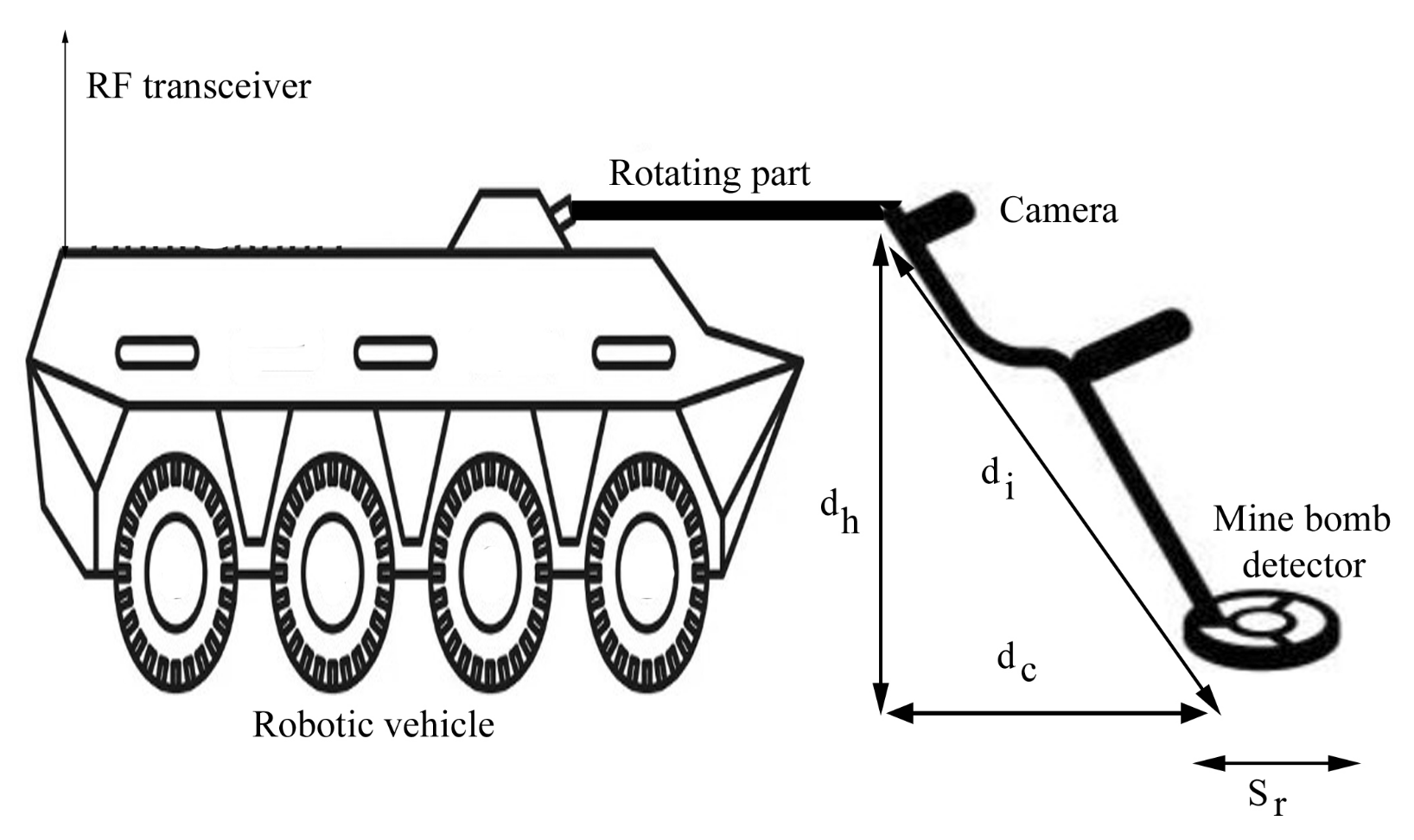
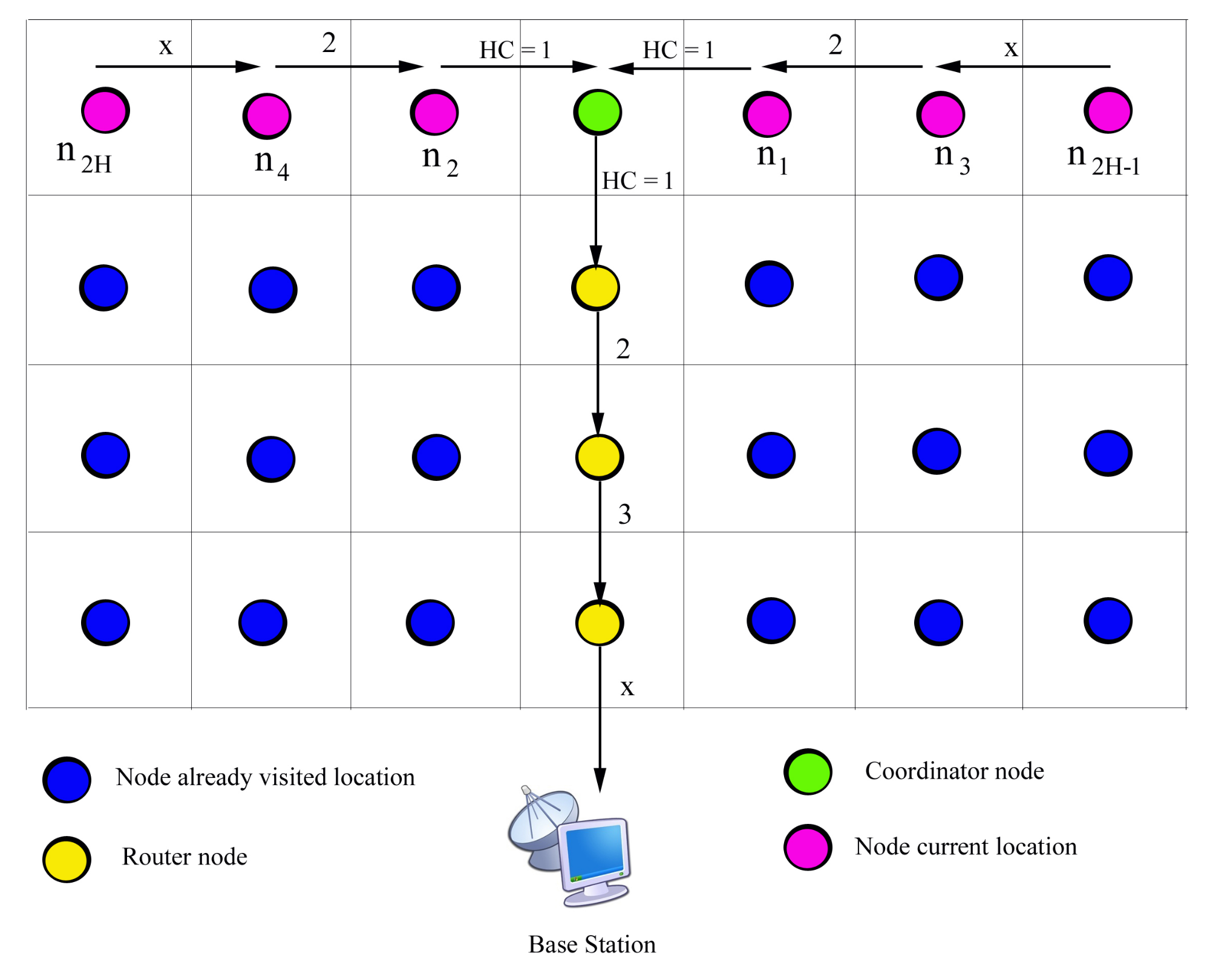


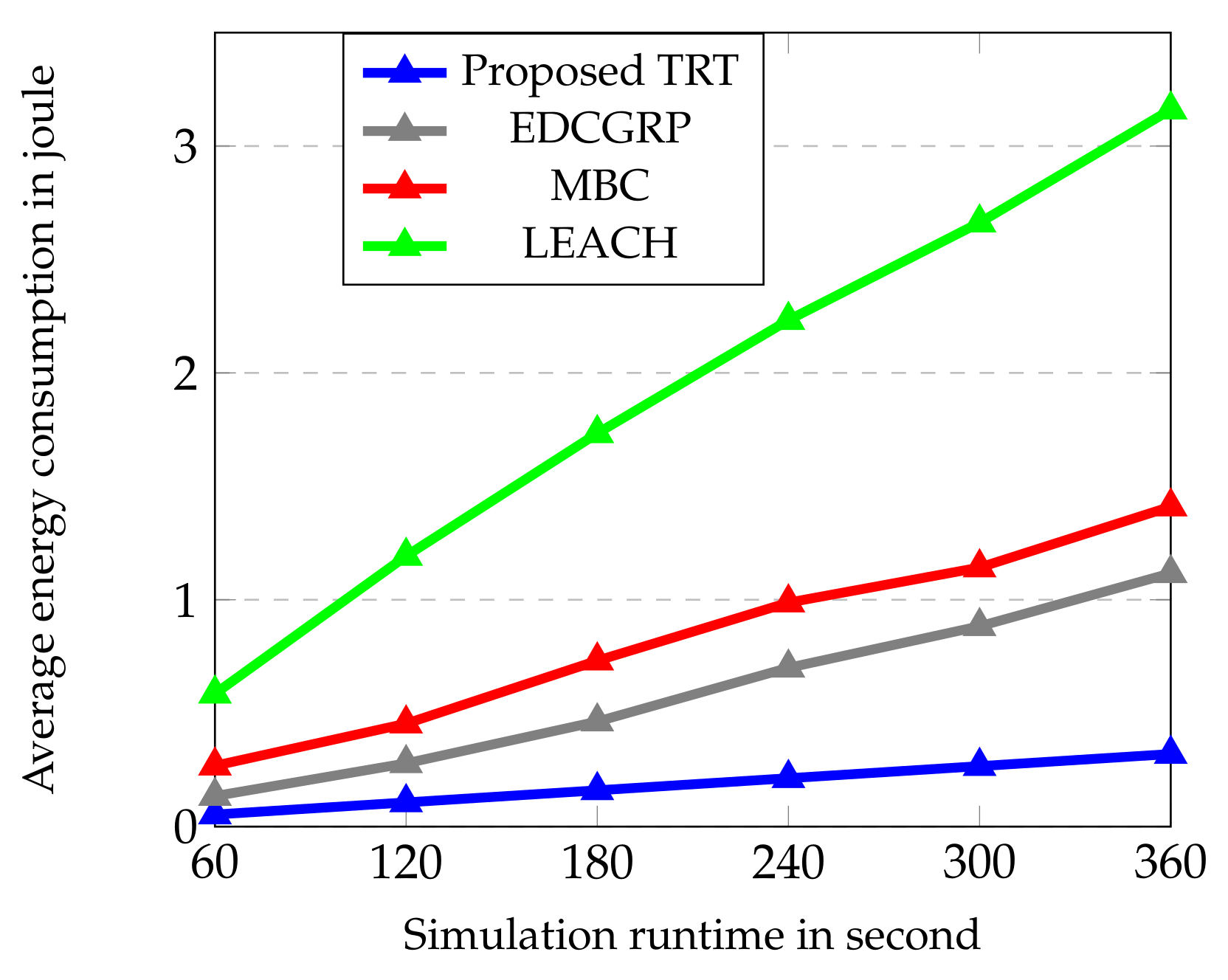
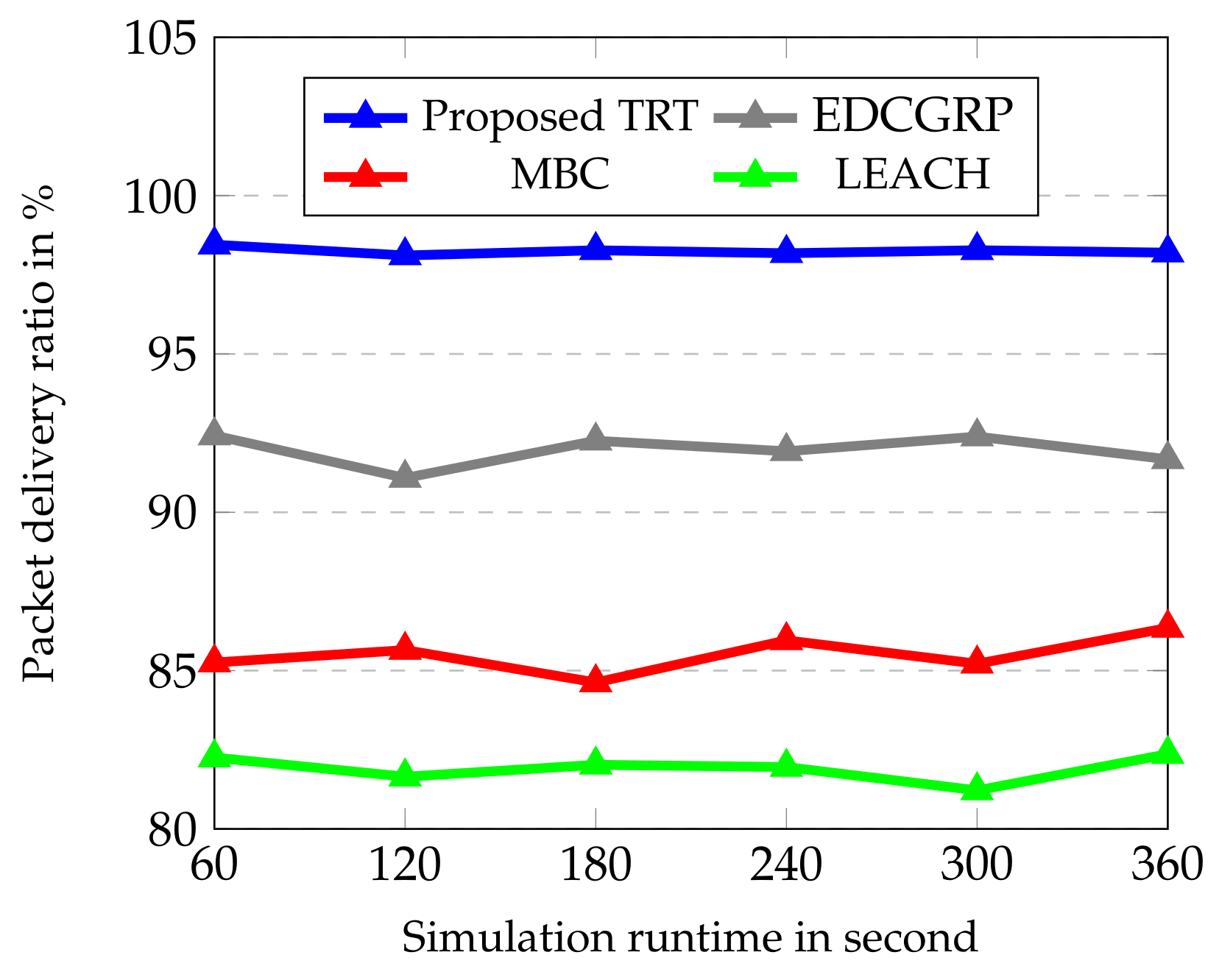
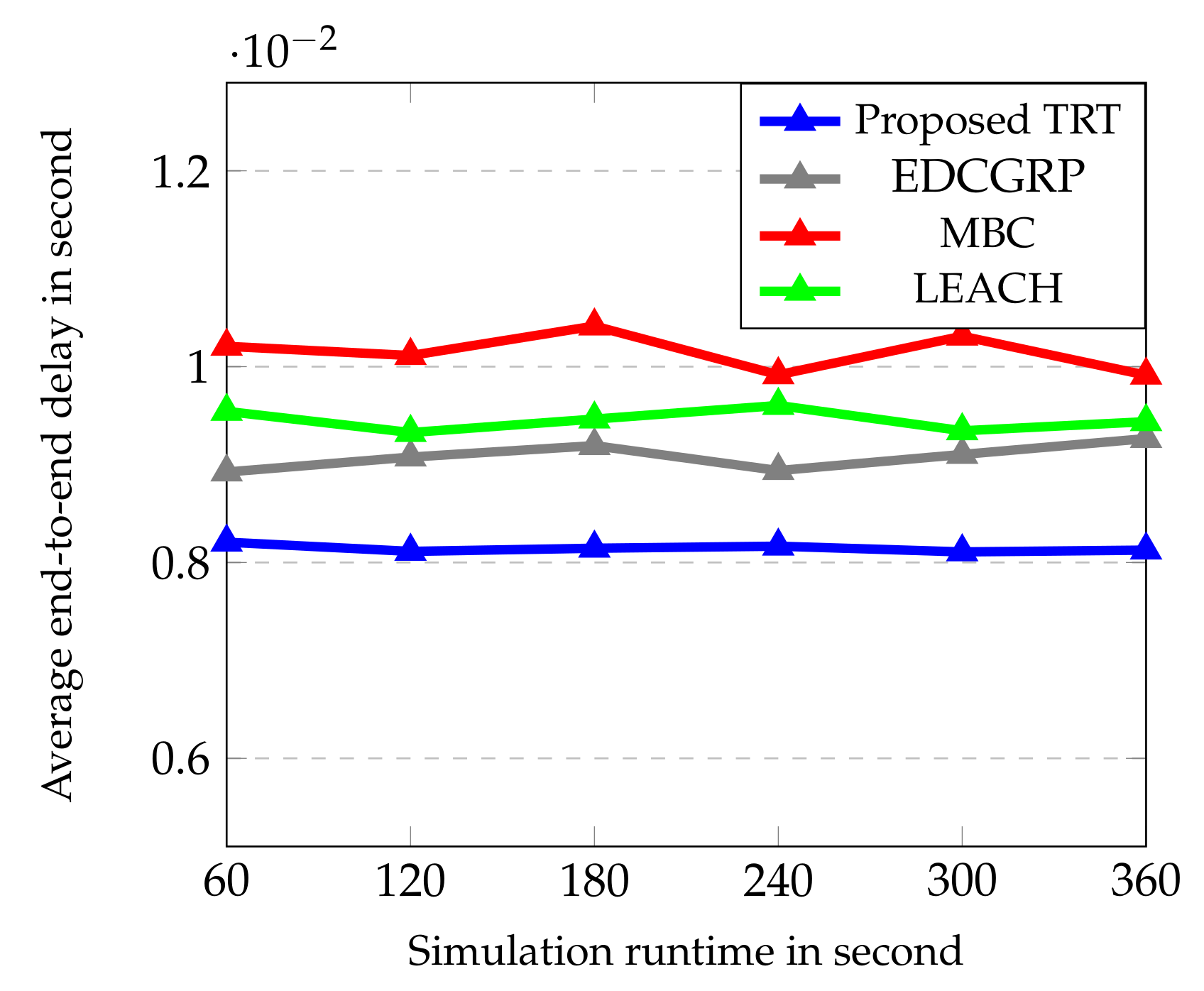
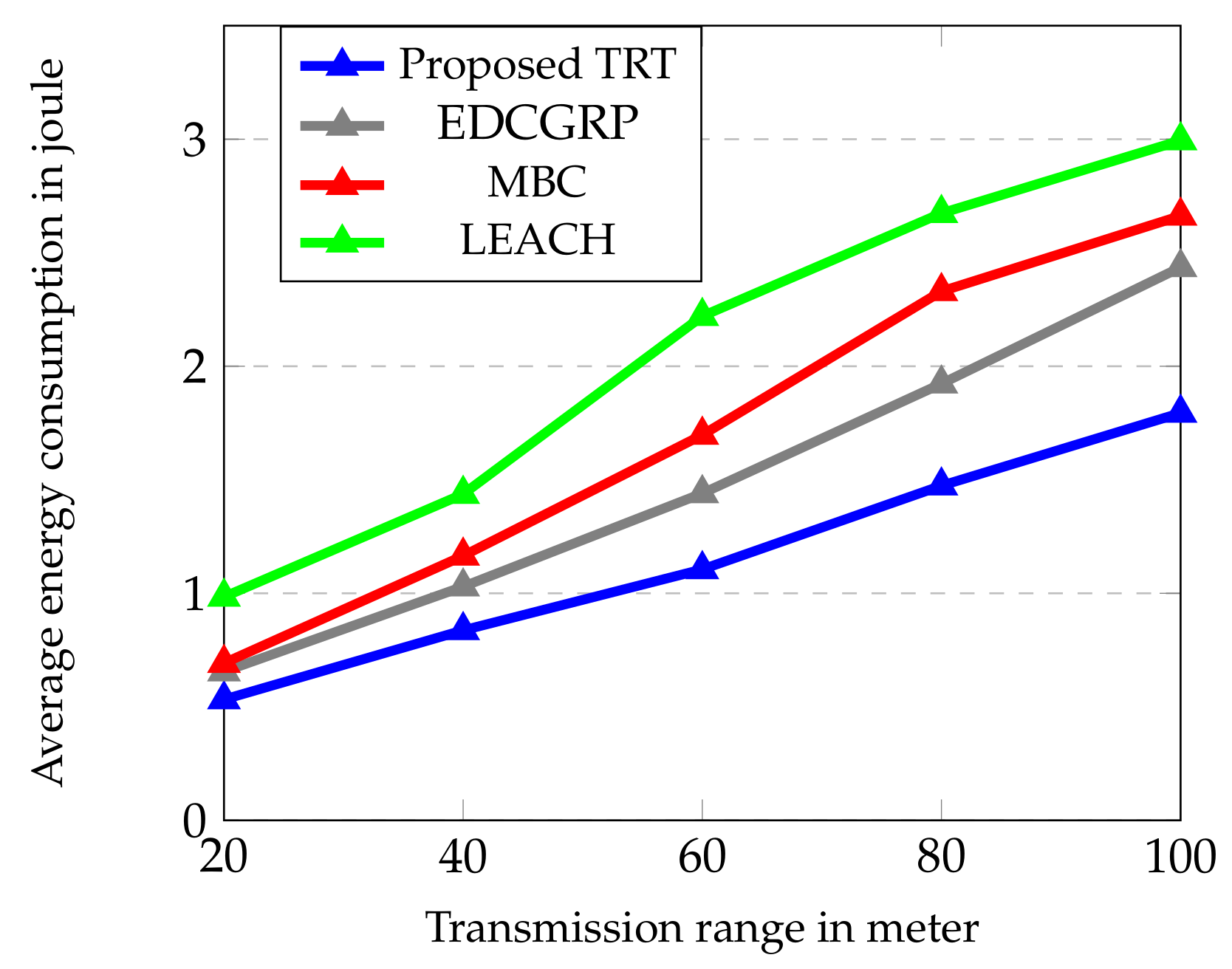

| Country | Death |
|---|---|
| Afghanistan | 2300 |
| Syria | 1906 |
| Ukraine | 429 |
| Iraq | 304 |
| Pakistan | 291 |
| Nigeria | 235 |
| Myanmar | 202 |
| Libya | 184 |
| Yemen | 160 |
| Reference | Mobile Vehicle | Data Communication Mode | Data Collection Methodology | Terrain Suitability | Location Based Real Time Application | Number of Nodes Required | Cost and Maintenance | Scalability | Application | Data Collection Complexity |
|---|---|---|---|---|---|---|---|---|---|---|
| [35] | UAV | Periodic driven | Clustering and Travelling Salesman Problem | Hilly and flat terrain | No | High | High | limited | Certain condition monitoring example: environment, surveillance | High |
| [36] | UAV | Periodic driven | zig-zag routing path | Flat terrain | No | High | High | Limited | Smart agriculture | Simple |
| [37] | USV | Event driven | policy-iteration based path planning | Flat terrain | Yes | Low | Low | High | Target or event detection and tracking (Object detection) | High |
| [38] | UAV | Periodic driven | bi-level hybridization-based metaheuristic algorithm | Hilly and flat terrain | Yes | High | High | Limited | Forest fire detection | Continuous visit of UAV |
| [39] | UAV | Periodic driven | Cluster and Metaheuristic Route Planning Algorithm | Hilly and flat terrain | No | High | High | Limited | Certain condition monitoring | Complex |
| [40] | UAV | Periodic driven | Voronoi diagram based UAV route determination method | Hilly and flat terrain | No | High | High | Limited | Certain condition monitoring | Simple |
| [41] | USV | Periodic driven | particle swarm optimization (PSO) based path planning algorithm | Flat terrain | No | High | High | Limited | Water monitoring | Complex |
| [42] | UAV | Periodic driven | K-means clustering strategy | Hilly and flat terrain | No | High | High | Limited | Certain condition monitoring | Simple |
| [43] | UAV | On-demand or query driven mode | UAV trajectory optimization using the genetic Algorithm | Hilly and flat terrain | Yes | High | High | Limited | Smart farming | Simple |
| Proposed TRT | USV | Event driven | T—based topology | Flat terrain | Yes | Low | Low | High | Landmine detection | Simple |
| Simulation Parameters | Values |
|---|---|
| Targeted sensing network area | 100 × 100 m |
| Number of sensor nodes | 25 |
| Sensor pole coverage radius | 2 m |
| Base Station location | (50, 0) |
| Bit rate | 50 kbps |
| Initial energy of sensor nodes | 10 joules |
| Data packet size | 512 bytes |
| Control packet size | 25 bytes |
| Image size | |
| [26] | 50 nJ/bits |
| [26] | 1.3 fJ/bits/m |
| [26] | 10 pJ/bits/m |
| [44] | 15 nJ/bit |
| [44] | 20 nJ/bit |
| [44] | 90 nJ/bit |
| Performance Metrics | Protocols | (m) | (m) | (m) | (m) | (m) |
|---|---|---|---|---|---|---|
| AEC in Joules | TRT | 0.30024 | 0.56247 | 0.8569 | 1.2739 | 1.69354 |
| EDCGRP [28] | 1.1167 | 1.5023 | 1.9343 | 2.4761 | 2.9902 | |
| MBC [27] | 1.41052 | 1.89421 | 2.3424 | 2.8347 | 3.34556 | |
| LEACH [24] | 3.16052 | 3.94212 | 4.6547 | 5.4277 | 6.5248 | |
| PDR in % | TRT | 98.1991 | 97.6245 | 96.999 | 96.21 | 95.67 |
| EDCGRP [28] | 91.672 | 90.152 | 88.743 | 87.032 | 84.899 | |
| MBC [27] | 86.347 | 85.84 | 84.29 | 82.967 | 82.14 | |
| LEACH [24] | 82.362 | 80.967 | 80.08 | 79.65 | 77.41 | |
| AEED in Seconds | TRT | 0.00812 | 0.00832 | 0.00852 | 0.00899 | 0.00924 |
| EDCGRP [28] | 0.00926 | 0.00939 | 0.00947 | 0.00963 | 0.00985 | |
| MBC [27] | 0.00943 | 0.00964 | 0.00982 | 0.01294 | 0.01372 | |
| LEACH [24] | 0.00991 | 0.01198 | 0.01401 | 0.01692 | 0.01927 |
Disclaimer/Publisher’s Note: The statements, opinions and data contained in all publications are solely those of the individual author(s) and contributor(s) and not of MDPI and/or the editor(s). MDPI and/or the editor(s) disclaim responsibility for any injury to people or property resulting from any ideas, methods, instructions or products referred to in the content. |
© 2023 by the authors. Licensee MDPI, Basel, Switzerland. This article is an open access article distributed under the terms and conditions of the Creative Commons Attribution (CC BY) license (https://creativecommons.org/licenses/by/4.0/).
Share and Cite
Kalaivanan, K.; Idayachandran, G.; Vetrivelan, P.; Henridass, A.; Bhanumathi, V.; Chang, E.; Methuselah, P.S. An Energy-Efficient T-Based Routing Topology for Target Tracking in Battery Operated Mobile Wireless Sensor Networks. Sensors 2023, 23, 2162. https://doi.org/10.3390/s23042162
Kalaivanan K, Idayachandran G, Vetrivelan P, Henridass A, Bhanumathi V, Chang E, Methuselah PS. An Energy-Efficient T-Based Routing Topology for Target Tracking in Battery Operated Mobile Wireless Sensor Networks. Sensors. 2023; 23(4):2162. https://doi.org/10.3390/s23042162
Chicago/Turabian StyleKalaivanan, K., G. Idayachandran, P. Vetrivelan, A. Henridass, V. Bhanumathi, Elizabeth Chang, and P. Sam Methuselah. 2023. "An Energy-Efficient T-Based Routing Topology for Target Tracking in Battery Operated Mobile Wireless Sensor Networks" Sensors 23, no. 4: 2162. https://doi.org/10.3390/s23042162
APA StyleKalaivanan, K., Idayachandran, G., Vetrivelan, P., Henridass, A., Bhanumathi, V., Chang, E., & Methuselah, P. S. (2023). An Energy-Efficient T-Based Routing Topology for Target Tracking in Battery Operated Mobile Wireless Sensor Networks. Sensors, 23(4), 2162. https://doi.org/10.3390/s23042162






